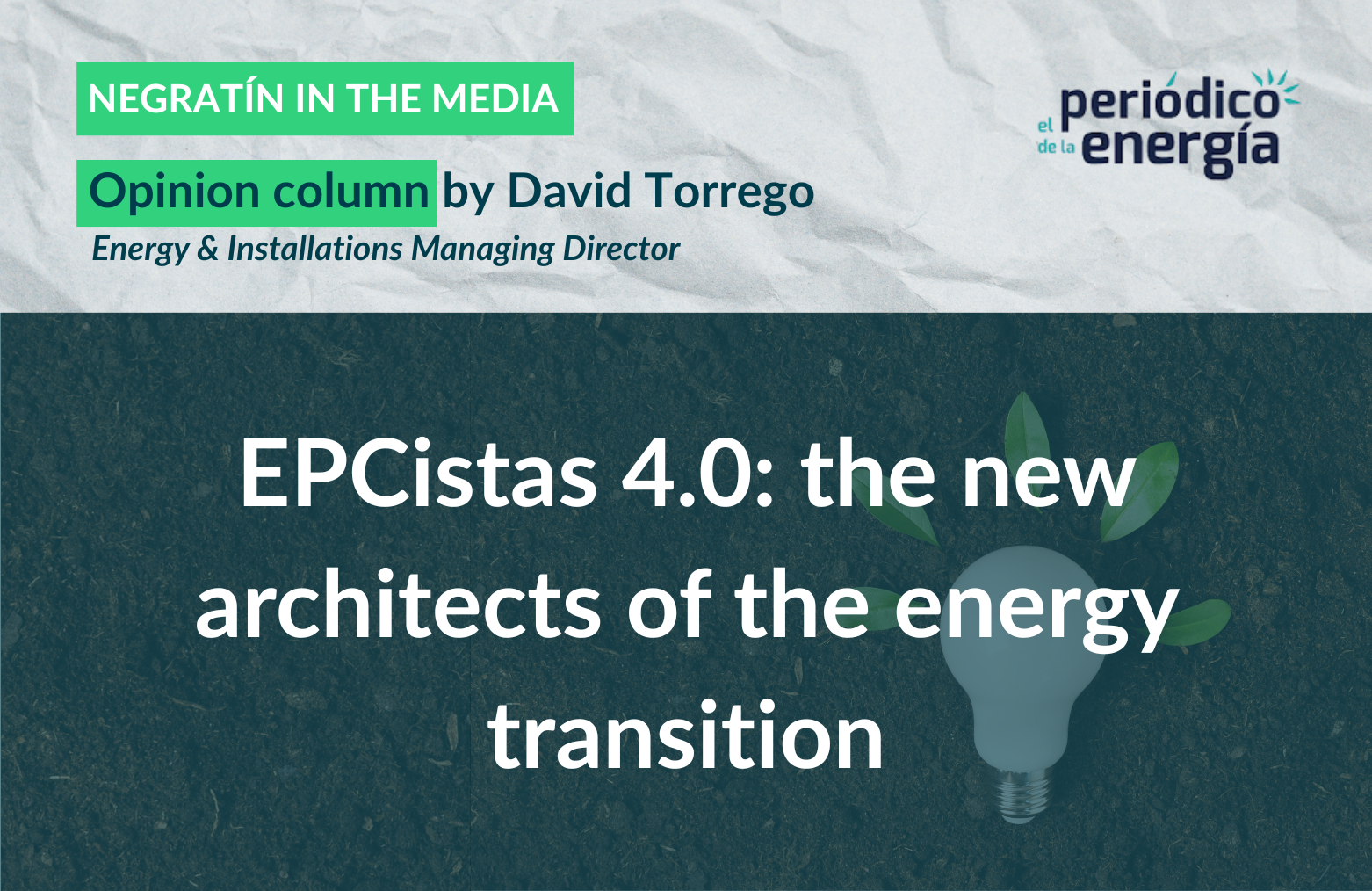Negratin in the media
20 August, 2025

In Europe, and especially in Spain, the energy transition has gone from being an aspiration to becoming a structural lever for economic and industrial transformation. The decarbonization of the electricity system, the electrification of demand, and the promotion of renewable energies are now strategic objectives that mobilize both public resources and private capital. Spain, for example, aims to achieve 81% renewable generation by 2030, according to the Integrated National Energy and Climate Plan (PNIEC), with an estimated investment of almost €300 billion.
In this new context, the role of EPC contractors (companies responsible for the design, procurement, construction, and operation of energy infrastructure) is more important than ever. It is no longer enough to simply execute projects: they are expected to have strategic vision, operational flexibility, and technological capacity to support developers, investors, and administrations in an increasingly complex and demanding environment.
This new scenario is also characterized by growing demands for sustainability, which is positioning itself as a fundamental cross-cutting pillar of the sector. Most EPC projects are increasingly linked to energy models based on renewable sources, which requires the real integration of ESG criteria from the design phase to operation.
The creation of a solar plant in Colombia or a photovoltaic installation in Spain is now a highly complex process that requires comprehensive and flexible management. EPC companies must be able to adapt to the operational, administrative, and financial particularities of each market.
Having in-house resources during all phases, from development and construction to maintenance and asset management, is a decisive competitive advantage.
In this way, both clients and financiers can be confident that, by hiring an EPC contractor, the agreed objectives will be met and the long-term viability of the project will be guaranteed. This is particularly relevant in emerging markets, where regulatory and financial barriers abound and where projects are sought to be executed within tight deadlines and with as little risk as possible.
The transformation of the EPC sector is also characterized by the incorporation of new technologies that are redefining the way energy infrastructure is designed, built, and operated. Tools such as BIM (Building Information Modeling), digital twins, remote monitoring, and artificial intelligence make it possible to reduce errors, anticipate incidents, and improve the traceability of ESG standards. Digital twins, for example, offer a virtual replica of the project that allows scenarios to be simulated, processes to be optimized, and relevant information to be accessed in real time, maximizing efficiency and responsiveness.
In Spain, where the acceleration of the energy transition coexists with challenges such as network saturation and administrative processing, operational efficiency and quality of execution are more critical than ever. That is why the EPC contractor of the future must rely on three pillars: technology, integration, and sustainability. Therefore, it is not just a matter of building, but of understanding the energy project as a whole, acting as a technology partner, risk manager, and guarantor of a positive impact.
At Grupo Negratín, we are committed to evolving towards a vertical model that combines internal engineering, our own execution capabilities, and growing activity as an IPP. This vision has allowed us to reduce delivery times in markets as diverse as Latin America and Asia, while ensuring compliance with the most demanding ESG standards.
The energy transition is not built with speeches, but with projects. And behind every successful project there is an EPC contractor that not only builds, but understands the energy project as a whole and knows how to anticipate, adapt, and innovate. In this new paradigm, the ability to become technology partners, risk managers, and guarantors of a positive impact will enable us to transform climate goals into real, viable, and sustainable infrastructure.
This opinion column was published in El Periódico de la Energía on August 20, 2025.
EPCistas 4.0: los nuevos arquitectos de la transición energética